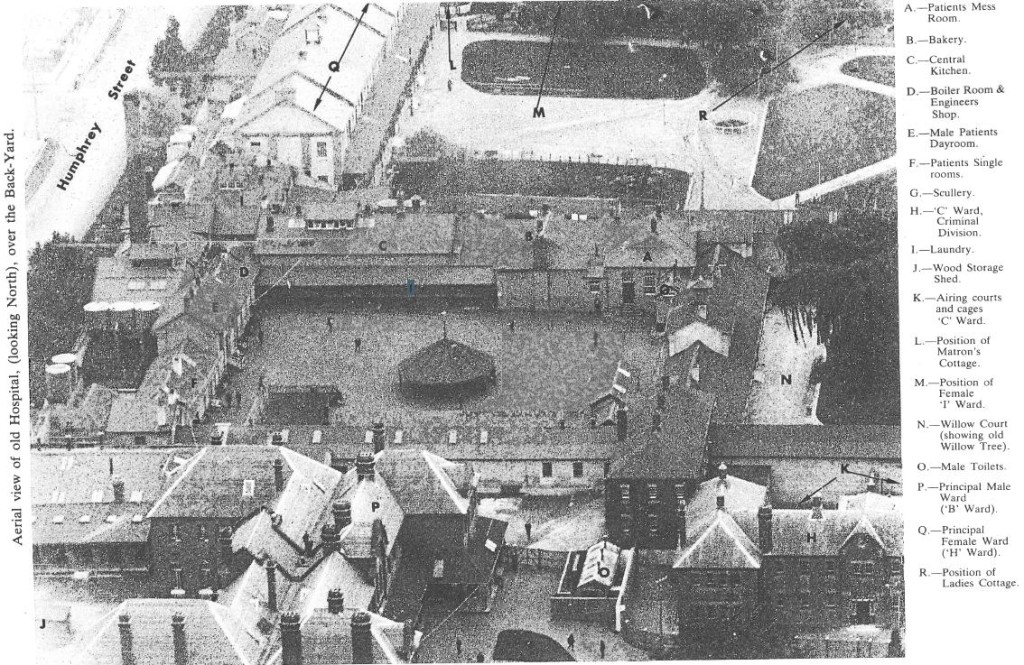Some of this information is a little sketchy as I have been sifting through documents trying to piece together when these
buildings were constructed and demolished. If anyone can confirm dates or any other info please let me know.
It’s a shame that we lost these absolutely beautiful buildings and its history; we can never let something like
this ever happen again at Willow Court.
Most of these Wards were demolished during the major reform of the 1960’s. Click on Tabs below for individual
Ward information
- Matrons Cottage
Matrons Cottage was situated approximately where Lyprenny stands today it was demolished in the late 1960's.
- A Ward
In 1936 Ward A was occupied by mentally Ill and mental defectives. The Ward had 4 bed double bedrooms and single rooms. The Gentleman’s Cottage- approx 47 patients and 6 staff.
Demolished in the late 1960's. A Ward was for the better class of male patients who paid board. It was located on the existing site of workshop near Lachlan Ward.
- B Ward
Male Patients constructed in 1893, it accommodated 107 patients. Demolished in the Early 1960's. B Ward was backed onto Humphrey st and near the Grey St Intersection. In today's terms B Ward would have been in the large Ward C airing yard facing I.T Building and Alonnah.

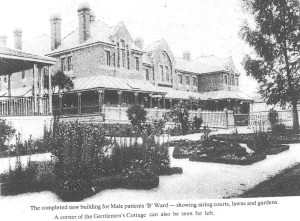
- H Ward
Old women’s hospital completed and Occupied in 1841. Demolished in the Early 1960's. H Ward was located where Lyprenny is today. H Ward backed on to Humphrey St and Charlotte St Intersections.
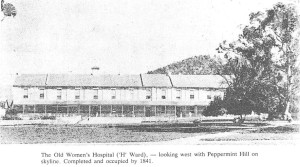
- K1 and K2 Clock Tower
In 1883 a Royal Commission recommended the construction of K1, K2 and the tower. It was constructed between 1887 and 1901 in two stages K1 and K2 due to lack of funding. It was demolished during the major reform of the 1960’s.
R.W. Gowland- Troubled Asylum (1981, p.182 and 183) states that Southern Cartage and Excavations moved into do the demolition works. Truckloads of bricks and timber were given to anyone who wanted them. A large amount was dumped on the present site of the New Norfolk Caravan Park. The Clock tower proved hard to knock down requiring two blasts.
Former nurse Mrs Grace Curtain writes (1965) it housed approximately 130 patients and 8 staff.
The Solid Tower would have defied any attack from the Norman invasion, the size of the stone blocks giving rise to the same mental conjecture as the pyramids. Stairs were feet thick, the tread grooves with nearly a hundred years of use- the archways and vaulted ceilings must surely have been the dream of a medieval architect. Acoustics left nothing to be desired, the faintness stirring in the dead of night could be hard from any pint in the building.
Clock itself originally came from Port Arthur and was wound every Monday, it was never correct in time.
The old tower watched during the war years as trenches were dug in the hospital grounds where staff and patients were put the Air Raid Precautions.
Part of K2 still remains and is known today as the masonic lodge.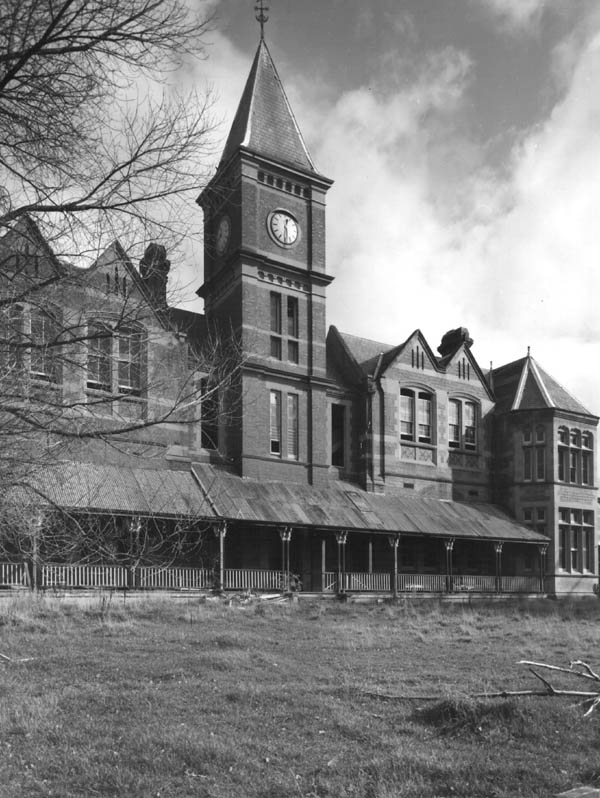
- Rear Quadrangel of the Barracks
The rear section of the Barracks that mirrored the existing front section was demolished in the 1960's, due to a recommendation by the Cunningham- Dax Report.
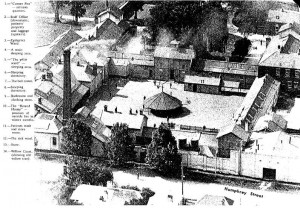
- Willow Tree
I believe the famous Willow Tree was cut down in October 1963 (year is an approximate).
An article in the Mercury May 17th 1969 states the Tree was removed due to Rot. Mrs Anne Terry & Mrs J Craw tended a young willow grown from root stock of the original tree planted by Lady Franklin. Several of these will be grown in Willow Court.
I have heard some of the cutting were planted at the Salmon Ponds.
R.W. Gowland- Troubled Asylum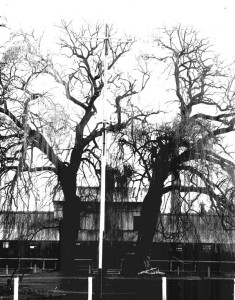
- Cunningham- Dax Report
In the report presented to parliament in 1963 it suggested:
Rear Court yard of the Barracks should be demolished immediately.
K1 Ward tower be demolished and perhaps part of K2, further consideration should be given to this part of K2, as it could be economically restored for 20 patients.
I Ward should be demolished as soon as the females security wards in the east hospital are built.
A Ward should be demolished when the wings of C Ward are built.
B Ward should be demolished when sufficient accommodation exists to take the patients to other wards.
